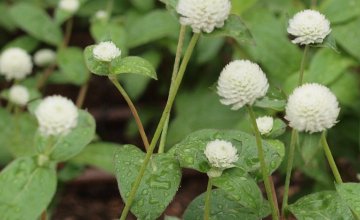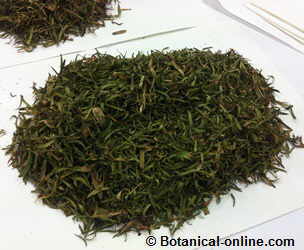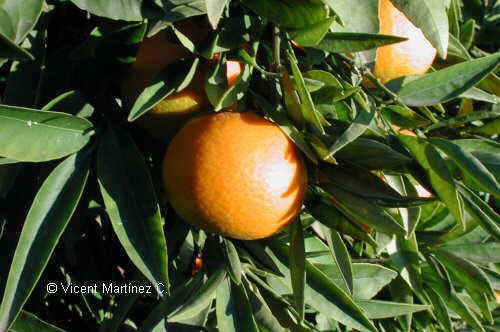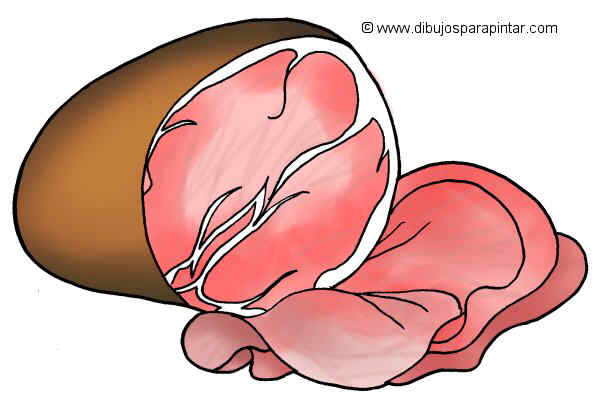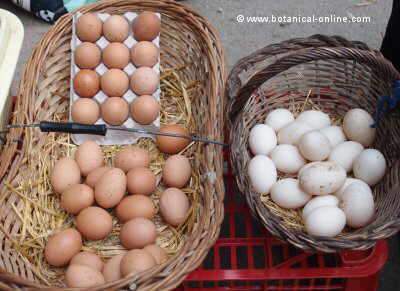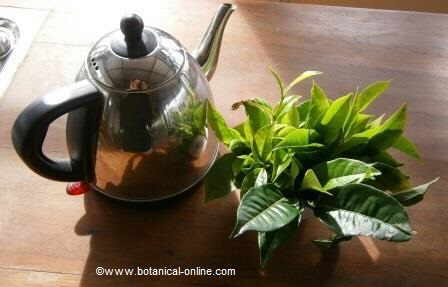Contents
- 1 MEDICINAL PROPERTIES OF LEMON BALM
- 1.1 INTERNAL USE PREPARATIONS WITH LEMON BALM LEAVES AND FLOWERS
- 1.2 Lemon balm to cure diseases of the nerves
- 1.3 Physical problems of nervous nature
- 1.4 Digestive properties of lemon balm
- 1.5 Digestive remedies with lemon balm
- 1.6 Balm for increasing bile production
- 1.7 Lemon balm for pain
- 1.8 Lemon balm for asthma
- 1.9 Melissa officinalis, Stimulant
- 1.10 Lemon balm for hyperthyroidism
- 1.11 Internal use preparations with lemon balm
- 1.12 Other applications of balm
- 1.13 How secure is lemon balm?
- 1.14 Harvesting and conservation of lemon balm
MEDICINAL PROPERTIES OF LEMON BALM
INTERNAL USE PREPARATIONS WITH LEMON BALM LEAVES AND FLOWERS
Lemon balm to cure diseases of the nerves
Lemon balm is one of the best remedies for nerve problems , both in situations of personal distress when this concern is reflected somewhere in the body, resulting in unpleasant reactions.
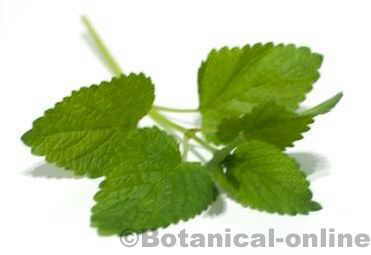 Lemon balm leaves
Lemon balm leaves
Traditionally, it has had very good reputation as a soothing plant, especially when taking part in the composition of the “Agua del Carmen recipe” (= “Water of Carmen).”, a soothing balm infusion widely recognized because of its virtues to calm nerves and prevent them to influence in the body have long been.
Caffeic and oleanolic acids, along with alcohols and terpenes, give lemon balm the soothing properties for nerves.
Among the main applications, we must highlight:
- Stress: In situations of personal stress, caused by multiple causes of modern life (work, family problems, adverse personal situations, etc..) balm has the ability to reassure and restore personal balance (Infusion of a teaspoon per cup of water for 15 minutes. 3 or 4 glasses a day)
- Problems of personal distress: When we found distressed, with a feeling of tightness in our stomach, or we do not seem to find solutions to our personal problems, lemon balm can help us feel more relaxed. (Infusion of a teaspoon per cup of water for 15 minutes. 3 or 4 glasses a day)
- Insomnia: Besides calming the nerves, Melissa officinalis has slightly narcotic properties. This is interesting when you have trouble sleeping. (Infusion of a teaspoon per cup of water for 15 minutes. A glass half an hour before going to bed) (Put three drops of lemon balm oil on a sugar cube and take half an hour before going to sleep
*Related information: Main relaxing infusions
Physical problems of nervous nature
There are many occasions when a nervous imbalance has its manifestation in the body causing physical alterations. Among the most characteristic situations that can have a nervous origin we can point out the following:
- Tachycardia or palpitations: In the palpitations of nervous origin, lemon balm has the ability to soothe the heart muscle and restore the normal heart rhythm. (Infusion of a teaspoon per cup of water for 15 minutes. 3 or 4 glasses per day) (Infusion of half a teaspoon mixed equal parts of the mixture of lima, lemon balm and valerian. Take two cups a day)
- Muscle spasms: they may occur by physical exertion or just have a nervous origin. In either case, balm is a good tonic that strengthens muscles and helps them relax, preventing the appearance of new spasms.
Its function as antispasmodic is not only limited to external limb muscles. Internally, the sedative properties of this plant may be useful to calm the spasms of other internal muscles, such as those of the digestive system, by acting on different organs muscles : (Infusion of a teaspoon per cup of water for 15 minutes. 3 or 4 cups a day between meals)
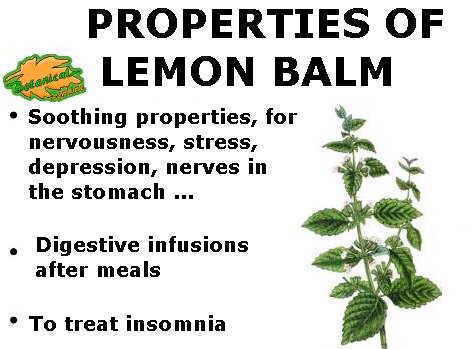
Main medicinal properties of lemon balm (Melissa officinalis)
Digestive properties of lemon balm
One of the most outstanding qualities of this plant are its digestive properties. Its anti-spasmodic function is not only limited to the musculature of the external limbs.
Internally, the sedative properties of this plant can be useful to calm the spasms of the digestive system by acting on the muscles of their organs: (Infusion of one tablespoon per glass of water for 15 minutes, 3 or 4 glasses a day between meals)
Digestive remedies with lemon balm
- Poor digestion: infusions of this plant after meals help digest food better.
- Stomach pain: pangs of nervous stomach or intestinal cramping can also be allayed by tisanes made with flowers and leaves of this plant.
- Vomiting caused by nervous stomach can be minimized with the use of this plant.
- Flatulence or presence of gases that cause bloating and discomfort.
It has also been found that the same treatment is suitable for the treatment of uterine spasms, because it is able to reassure the muscles of the uterus (utero-tonic) and prevent aches that occur because of involuntary contractions.
* More information: How to make a lemon balm infusion?
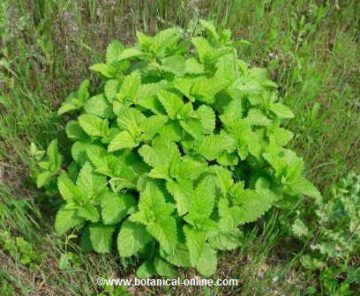
Balm for increasing bile production
Melissa officinalis has the power to act on the liver gallbladder, being able to increase the production of bile. This property can be exploited in cases when a biliary insufficiency is the cause of poor digestion.
It is also useful to help decongest the liver as an aid in depurative or slimming diets. (Infusion of one tablespoon per glass of water for 15 minutes, 3 or 4 glasses per day)
Lemon balm for pain
The ursolic, chlorogenic and caffeic acids, together with thymol and eugenol, provide valid analgesic properties for pain in any of its many forms: (Infusion of a teaspoon per cup of water for 15 minutes. 3 or 4 glasses a day)

Among the main uses of lemon palm as analgesic, we can point out:
- Migraine or headache: especially when it takes the form of migraines or recurring pain on one side of the head accompanied by vomiting and malaise.
- Toothache: Its slightly narcotic effect, added to its analgesic properties can be used to numb the nasty toothache.
- Earache: Equally useful in case of earache.
* See: Infusion of lemon balm for pain
Lemon balm for asthma
Its antispasmodic properties as well as its protocatechuic acid content can be useful to prevent spasms caused by asthma attacks. (Infusion of a teaspoon per cup of water for 15 minutes. 3 or 4 cups a day between meals)
Melissa officinalis, Stimulant
Balm is considered a good stimulant. Read more
Lemon balm for hyperthyroidism
In combination with Bugleweed (Lycopus europaeus) balm can help decrease the enzymatic production of the thyroid, so it is an official aid in the treatment of hyperthyroidism (Infusion of half a tablespoon of lemon balm and half of bugleweed in a cup of water. Take 3 cups a day)
Internal use preparations with lemon balm
Used externally, lemon balm is a good vulnerary, that’s to say, it has the ability to heal external problems of the skin so it can be used to:
- The healing of wounds or sores. (Infusion of 4 tablespoons per liter of water. Apply the resulting liquid on the appropriate area)
- Insect bites: If stings from bees, wasps, mosquitoes, tiger mosquitoes, ticks, ants or other insects can apply the juice of the plant on the bite.
- Bad breath: To eliminate bad breath just chew a fresh leaf after meals.
- Toothache: (Infusion of four tablespoons of dried plant per liter of water. Rinse teeth with liquid from the infusion)
- Relax: The leaves of this plant are very suitable to relax the body when introduced into the bath water. A couple of glasses of infusion of this plant also may be be poured into the water.
- Skin Care: Lemon balm essential oil is used for the manufacture of creams for skin care. especially for oily skin creams. The dried plant can be used for making masks (See Mask for wrinkles)
Other applications of balm
- Water of melissa: Melissa Water or water of Carmen (= Agua del Carmen, in Spanish) is a preparation made from the year 1611 by the monks of the religious community of Discalced Carmelites (Carmelitas descalzos, in Spanish).
- Melissa essential oil: widely used in aromatherapy, in the industry of cosmetics and perfumes and industries of drinks and food.
- Take care of your clothes: The introduction of a few sprigs of this plant in closets, besides perfuming linen, protects from possible attacks of insects.
- Honey plant: It is considered of the best plants for bees to produce honey. This factor has to be taken into account when harvesting because we run the risk of being bitten by one of these insects.
- Seasoning: The fresh leaves of lemon balm can be used to flavor food, especially salads.
- Industry of liquors : Balm is a plant that is often used in the manufacture of liqueurs to flavor them.
- Cosmetic industry: lemon balm extracts are used to manufacture cosmetics.
How secure is lemon balm?
Balm is a fairly safe plant but not free of toxicity. Besides, it has some contraindications and side effects that should be taken into account.
Harvesting and conservation of lemon balm
The leaves and flowers are harvested during the flowering time, that usually occurs during the months of June to August.
When the plant finishes flowering, it usually acquires a smell that is not very nice.
The collected material should be dried in the shade and stored in airtight containers, properly cleaned.
![]() More information on lemon balm.
More information on lemon balm.

